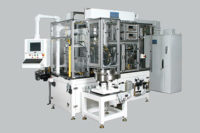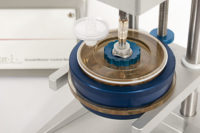
Manufactured parts that are out of specification are not only worthless to the customer but an expense to the producer. Manufacturers want to understand and control the variables to consistently produce not only saleable products, but products with a liability-free service life. Logically, the same gains should be realized in leak testing by obtaining and analyzing leak test data. However, over the years many compromises have been made to obtain leak test data, clouding leak testing today and potentially rendering the data useless.
The process of only a go/no-go result became insufficient and leak data was now required from the process. This was the first time anyone questioned the leak tester beyond asking for the calibration certificate. Typically, leaks are specified as a maximum leak; for example, a maximum leak of 2 cubic centimeters per minute (cc/min). Historically a “go” resulted when the total measured leak was less than the maximum leak rate specification. At this point the data contained two indistinguishable variables: the true leak to atmosphere and the apparent leak due to stabilization.
Industry insisted on having leak test data without ever defining a maximum quantity of apparent leak concealed in the leak test data. Many leak test companies responded with pre-packaged leak test units that provided the data industry was demanding without any constraint to the actual measurement.
The paradox with many of the leak test units purchased was that they contained similar off-the-shelf pneumatics as leak testers built in-house. The purchased leak test units did offer a calibrated package, able to produce and collect the leak test data with an interface facilitating leak test setup with the push of a button.

However, a system proven capable would routinely display values for the same calibrated leak that varied by more than 100%. The data continually shifted and when an operator reset it to the calibrated leak, all the data from previous experiments became re-established to a different unknown reference. The data was useless in correlating previous experiments with each reset.
“Discoveries consist of seeing what everybody has seen and thinking what nobody has thought,” said Albert Szent-Gyorgyi. The monumental discovery in this case was that the leak data was not a true leak measurement but only a software prediction based on what a known leak “looks like.”
The value of the calibrated leak and zero had become undefined variables containing unknown and fluctuating quantities of true leak to atmosphere and the apparent leak due to stabilization. Undefined variables more than three times the maximum leak rate could be just zeroed out to produce the leak test data industry trusted. The subsequent breakthroughs with software, processing power or proprietary algorithms may help fix the data but often are better at concealing the problem.
It may be difficult to conceptualize how a calibrated leak tester verified to a calibrated leak could produce useless data.

The challenge is to communicate this eureka moment to a manufacturing industry struggling to understand the conflicting opinions, partial truths and myths about leak testing. Understanding any process will require consistently measuring from the same reference point, and in leak measurement, that point is actual zero.
Complacency in establishing whatever zero looks like on the shop floor have concealed the variables in the part, fixture and test pneumatics to display the data people want to see. It is imperative to measure the variation in order to provide the root cause solution, and the maximum apparent leak due to stabilization must be defined in the leak specification.

